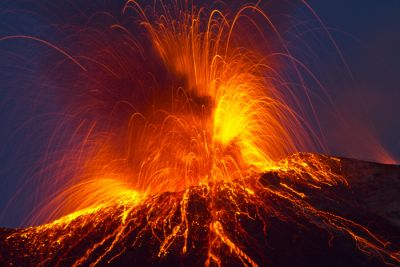Since Feb. 16, Mount Etna, Europe's most active volcano, has been giving off an impressive demonstration of nature's firepower, coloring the night sky in shocking hues of orange and red. The volcano produced ash and small lava stones which rained down on eight villages on Etna’s slopes in its latest eruption in early March. Locals have taken to covering parked cars outdoors with carpets, blankets and sheets of cardboard to make cleanup easier after each blast. No injuries or serious damage have been reported after the recent blasts. Geologically active, Etna occasionally becomes particularly noisy and explosive as it has been lately. Italy's National Geophysics and Volcanology Institute (INGV) scientists say there is no way of predicting when this current round of particularly robust volcanic activity might subside.
Il 16 febbraio, il Monte Etna, il vulcano più attivo in Europa, è eruttato. La lava colora la notte con colori brillanti di arancione e rosso. La cenere e le piccole pietre di lava piovono continuamente sopra i paesi piccoli ai piedi del vulcano. I cittadini hanno coperto le macchine e altre cose fuori casa con tappeti, coperte, e cartone per proteggere dal cenere. Fortunatamente, non ci sono né le persone ferite né i danni seri. L'Etna erutta molto frequentemente. Secondo gli scienziati dell'Istituto Nazionale di Geofisica e Vulcanologica d’Italia, non c’è un modo di sapere o prevenire una eruzione e nemmeno predire quando l'eruzione si fermerà.



